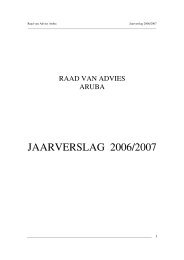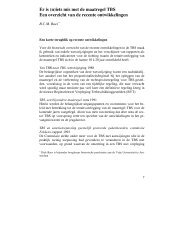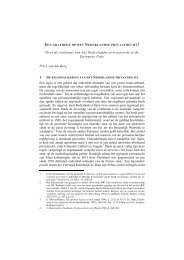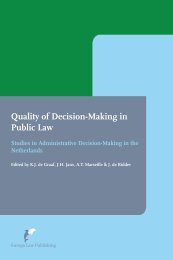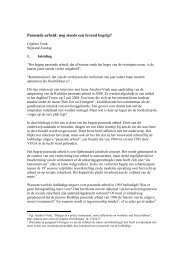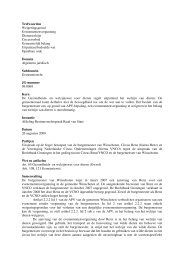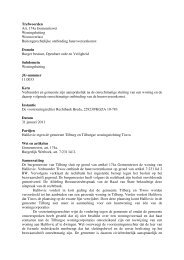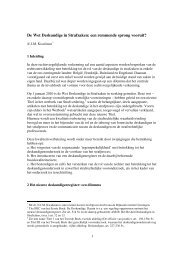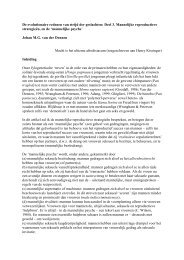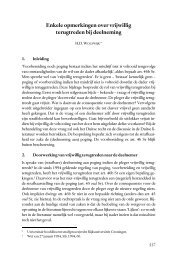Evaluatie embryowet - Rijksuniversiteit Groningen
Evaluatie embryowet - Rijksuniversiteit Groningen
Evaluatie embryowet - Rijksuniversiteit Groningen
Create successful ePaper yourself
Turn your PDF publications into a flip-book with our unique Google optimized e-Paper software.
Summary<br />
The Act<br />
The Embryos Act, which came into force on 1 September 2002, imposes limitations on the use of gametes<br />
and embryos by prohibiting what is deemed impermissible and attaching conditions to other<br />
procedures. Parliament has sought to strike a balance between respect for the dignity of the human<br />
person, and human life and other values, such as care of the sick, the promotion of their health, the<br />
well-being of infertile couples and the future child. Out of respect for human life the Act imposes<br />
conditions and limitations on the use of gametes and embryos and it limits the purposes for which<br />
these may be used. The basic premise is that most social groups must agree with the decisions that<br />
are made and that the choices should retain some degree of validity in the face of advances in medicine.<br />
Parliament opted for a system consisting of standardisation, the formulation of rights and the definition<br />
of responsibilities on the one hand, and the drafting of protocols and reporting on the other. The Act<br />
imposes a provisional ban on the creation and use of an embryo specifically for scientific research and<br />
for purposes other than establishing a pregnancy which will be repealed at a time to be determined by<br />
Royal Decree. This Decree will be placed before Parliament within five years of the Act coming into force.<br />
The Netherlands must take into account the Convention for the Protection of Human Rights and Dignity<br />
of the Human Being with Regard to the Application Of Biology and Medicine (CHRB). The most<br />
important provision as far as the Embryos Act is concerned obliges a signatory state to ensure adequate<br />
protection of the embryo where the law allows research on embryos. This Convention, which<br />
also has several relevant additional protocols, has been signed by the Netherlands but not yet ratified.<br />
Key question<br />
The central question raised in the evaluation study concerned the extent to which Parliament’s objectives<br />
have been realised. This was answered by addressing the following ancillary questions: How is<br />
the Act being applied in practice Are any bottlenecks or problems being encountered (e.g. in relation<br />
to new developments) Does the Act have unwanted effects (either direct or indirect) – for example,<br />
does it act as a barrier to scientific research Considering Parliament’s original objective, do the findings<br />
provide grounds for modifying the Act in respect of definitions, procedures or otherwise<br />
Design of the study<br />
The evaluation study consisted of three parts.<br />
The aim of the first part was to gain an insight into the progress that has been made in the first few<br />
years with regard to the introduction of the Act and its application (chapter 6). In addition, interviews<br />
were conducted with professionals at IVF centres, representatives of professional associations, scientists,<br />
the Central Committee on Medical Research Involving Human Subjects (CCMO), the patient organisation<br />
Freya and the Health Care Inspectorate (IGZ). Protocols were collected from the IVF centres<br />
and the relevant medical ethical committees (MECs) have answered written questions about their<br />
17




